The Foundation of Durability
State-by-State Exceptions
Many states have made changes to the building-code requirements for crawl-space ventilation and offer various exceptions. For instance, here is a section from the Washington State Energy Code on venting foundations and the exceptions available:
R408.2: Openings for under-floor ventilation. The minimum net area of ventilation openings shall not be less than 1 square foot (0.0929 square meter) for each 300 square feet (28 square meters) of under-floor area. Required openings shall be evenly placed to provide cross ventilation of the space, except one side of the building shall be permitted to have no ventilation openings. Ventilation openings shall be covered for their height and width with any of the following materials, provided that the least dimension of the covering shall not exceed 1⁄4 inch (6.4 millimeters):
- Perforated sheet metal plates not less than 0.070 inch (1.8 millimeters) thick.
- Expanded sheet metal plates not less than 0.047 inch (1.2 millimeters) thick.
- Cast-iron grill or grating.
- Extruded load-bearing brick vents.
- Hardware cloth of 0.035 inch (0.89 millimeters) wire or heavier.
- Corrosion-resistant wire mesh, with the least dimension being 1⁄8 inch (3.2 millimeters) thick.
Exception
The total area of ventilation openings shall be permitted to be reduced to 1⁄1,500 of the under-floor area where the ground surface is covered with an approved Class I vapor-retarder material and the required openings are placed to provide cross ventilation of the space. The installation of operable louvers shall not be prohibited. If the installed ventilation is less than 1/300 or if operable louvers are installed, a radon vent shall be installed to originate from a point between the ground cover and soil.
As indicated, in the State of Washington the standard code/ratio is 1/300. And for the most part, a continuous perimeter vent system does not have a problem reaching this ratio. However, other jurisdictions have their own requirements, so relevant codes need to be researched before specifying the continuous perimeter vent system.
Conventional Foundation Ventilation Systems
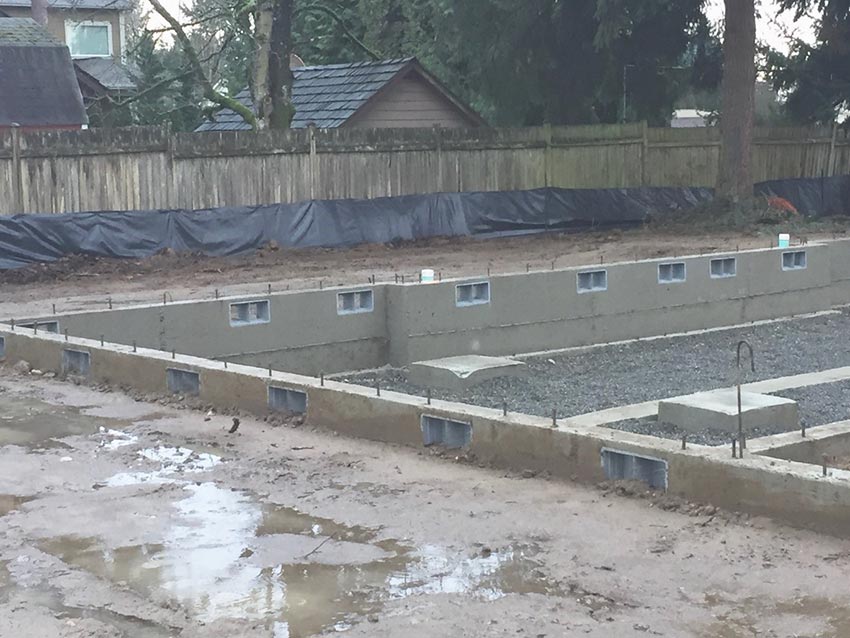
The conventional way of passively venting a crawl space requires many holes in the foundation or stem wall.
Currently, there are four options available for preventing moisture buildup in crawl spaces, including: 1) creating conditioned space (enclosed space), 2) mechanical ventilation, 3) vent boxes in the concrete foundation (passive ventilation), and 4) vent boxes cut into the rim joist (passive ventilation). The first two methods tend to be costlier and will require ongoing use of electricity. The passive method is addressed in this course. Passive ventilation takes advantage of the laws of nature. Air moves from cold to hot, and from wet to dry. In that way, if the crawl space is vented, the air beneath is in continuous motion.
In the conventional method of venting crawl spaces, openings are created in the foundation stem wall or rim joist at sizes dictated by the square footage of the house. Some designers may cringe at the sight of these openings in an otherwise sleek elevation, but in theory, these screened openings should do the intended job to allow air in and keep rodents, large insects, and other animals out. At times, though, reality overtakes theory, and the system fails or compromises the building.
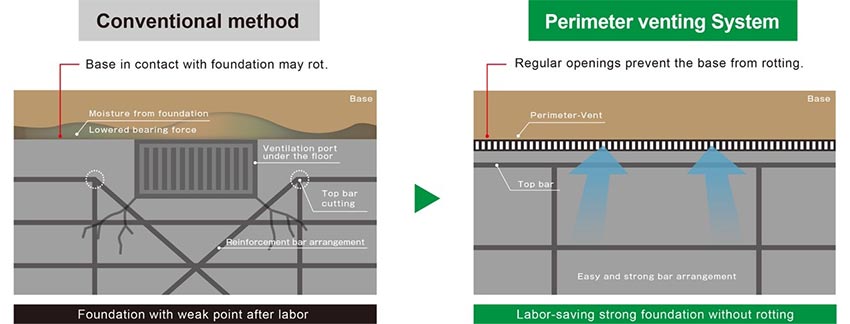
In the conventional method of venting a crawl space, the rebar is diverted to accommodate each vent opening.
Here are some weaknesses in the conventional venting system:
Concrete vent boxes can weaken the foundation. While rebar is used to strengthen the foundation wall against damage during earthquakes and other threats, the rebar is diverted at the vent openings. Simple logic indicates these areas are weaker than the surrounding reinforced concrete.
Vent box openings can present design-load challenges. For points where heavy loads on the building would be sitting right over an opening, the placement of the opening must be altered. That is usually handled in the engineering phase, but if that is missed, design and construction challenges could follow.
Vent openings can become backfilled with soil. Openings into the foundation wall near grade can and sometimes do become backfilled over time, decreasing the size of the opening, restricting airflow, and defeating its purpose.

Conventional vent openings can become blocked by vegetation.
Vent openings can be blocked by vegetation. Likewise, openings into the foundation wall can get blocked by vegetation growing up, and again the airflow is restricted. The dangers of moisture trapped in the crawl space (see above) can occur.
Vent screens can get cut during or after construction. The screening designed to allow airflow but keep out pests can easily get cut, either by other trades during construction or over time post construction.
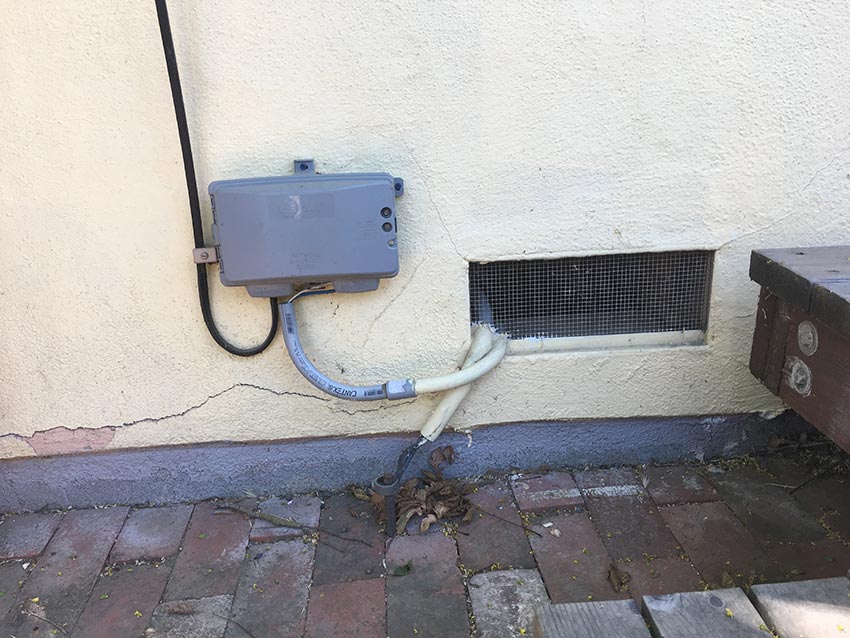
The screening on conventional vent openings can be compromised by other trades.
Vents can become a tripping hazard. When foundation vents require a vent well that protrudes out from the wall, they can become a tripping hazard.
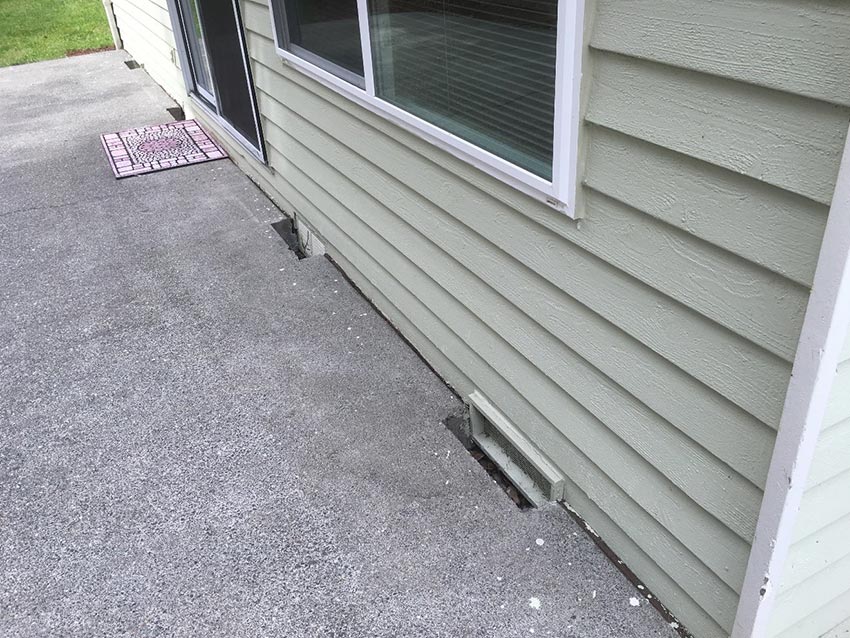
Conventional vent openings can become blocked by dirt and debris.
Unvented air pockets can develop. In a venting system where the openings are set every 6 or 8 feet apart, dead air pockets can develop in corners or between openings where the airflow is almost nonexistent. In those areas, moisture will build up and cause damage.
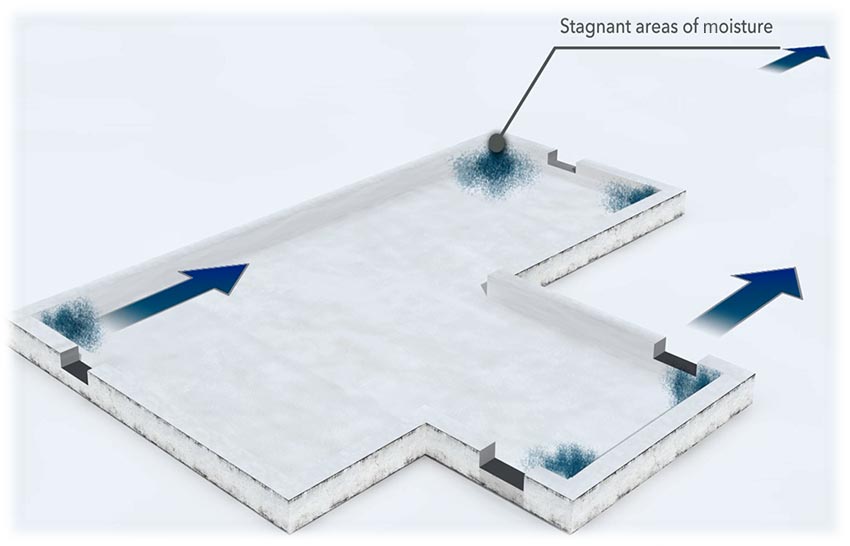
Conventional vent openings can leave dead, unvented spots.
The vents pose aesthetic concerns. While the practical weaknesses of boxy foundation vents are considerable, designers and architects often find the aesthetics of this method to be a jarring visual blemish on the exterior of an otherwise clean and streamlined aesthetic. The choice of a continuous perimeter foundation vent is often driven by this aspect.
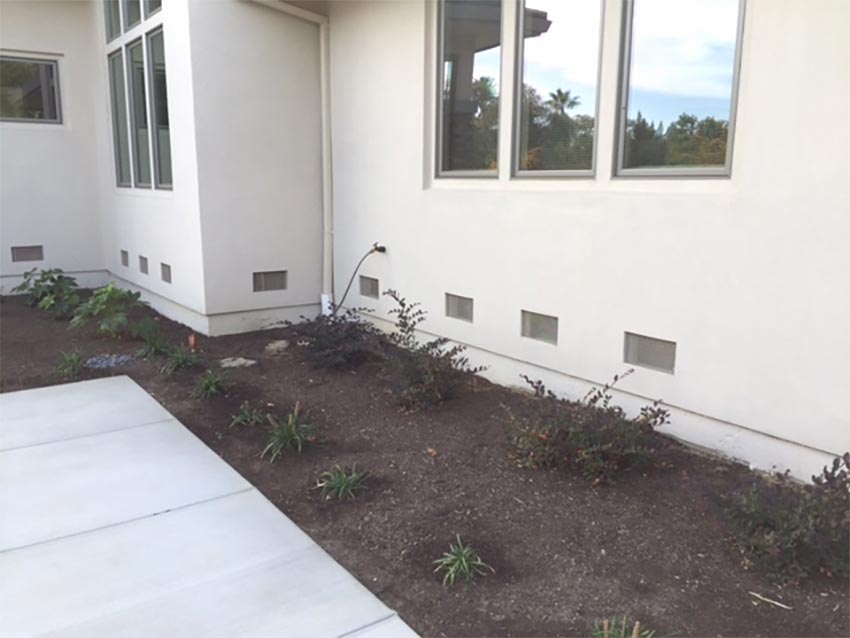
Some architects believe that conventional vent openings detract from the exterior aesthetic.
Continuous Perimeter Foundation Vent System Characteristics
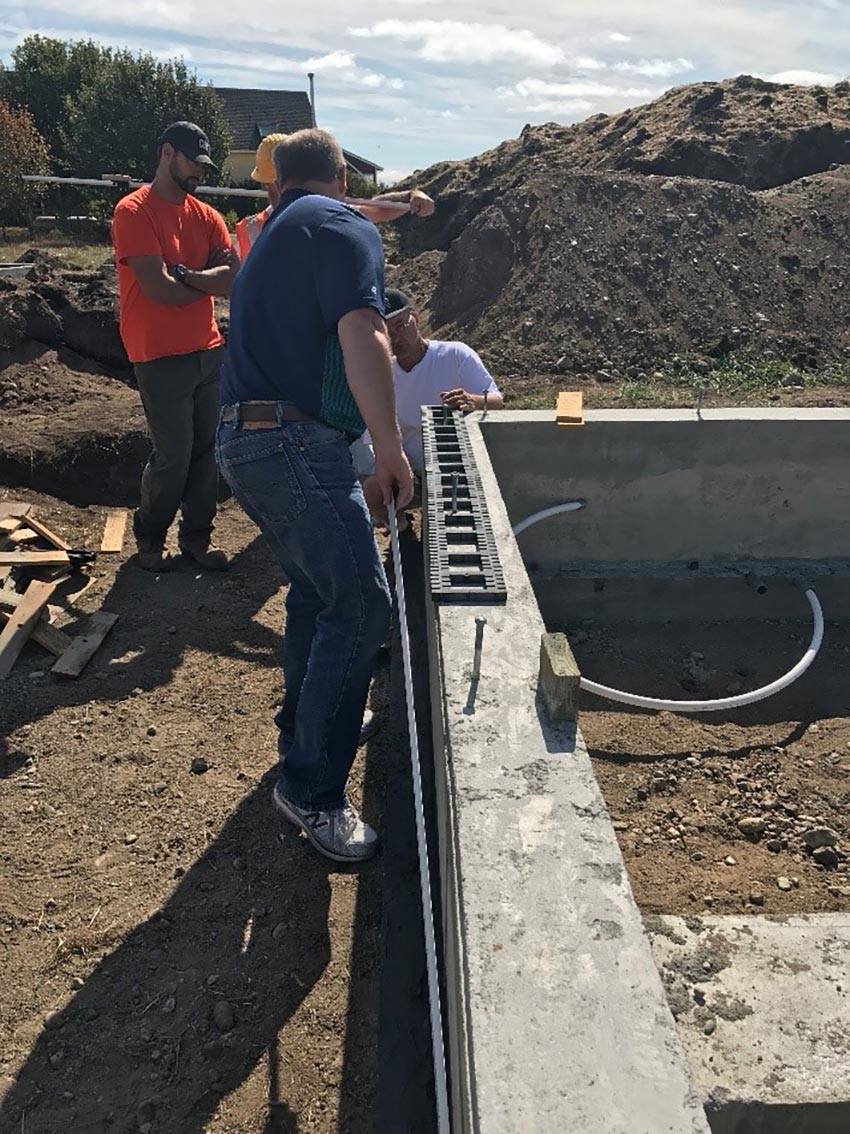
Continuous perimeter foundation vent systems are installed on top of the foundation or stem wall, providing a capillary break between the concrete and the wooden sill plate.
How It Works
As has been mentioned, this new crawl-space ventilation system utilizes passive, natural airflow. Unlike the traditional spot ventilation method, it allows maximum cross ventilation of airflow into the crawl space from the complete circumference of the building foundation, leaving no dead air pockets in the entire crawl space. The vent is installed between the concrete foundation and the sill plate, and it supports the entire weight of the house.
The horizontal vent is part one of a two-part system. The holes in the vents are slightly larger, which is slightly larger than the IBC code states as acceptable for airflow. The second part of the system is the covering (flashing) that is installed over the vent when the exterior siding is installed. This covering has 1⁄8 inch holes in it because some building jurisdictions like to see 1⁄8 inch holes to keep insects out. Also, the 1⁄8-inch standard is required by California if the vent covering is to be WUI certified, and that is why the holes in new perimeter venting systems are not 1⁄4 inch as stated in the code.










